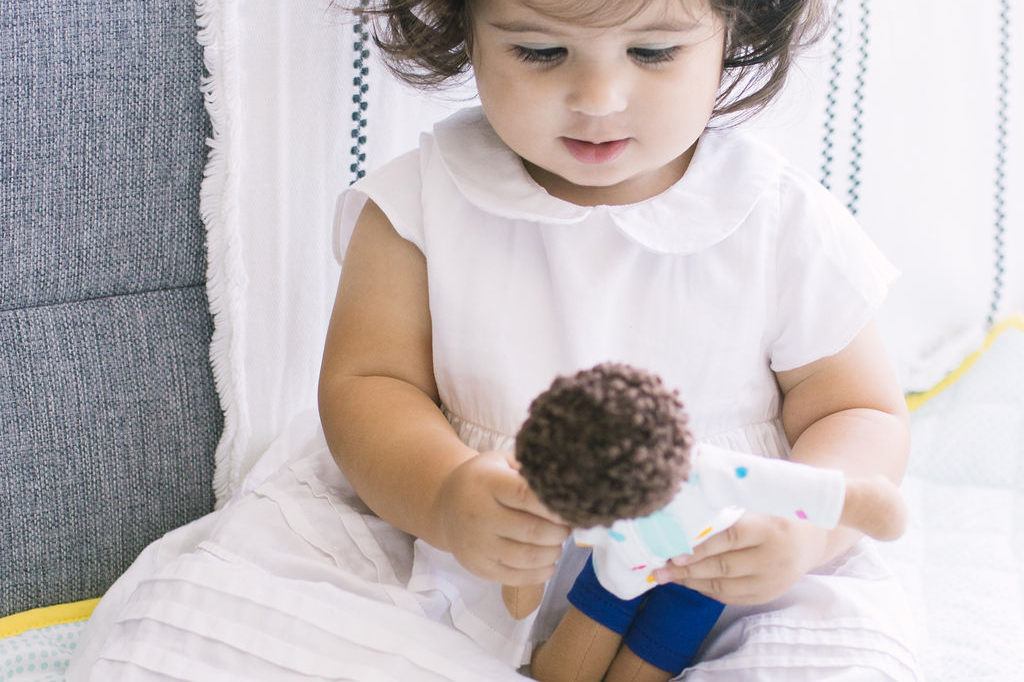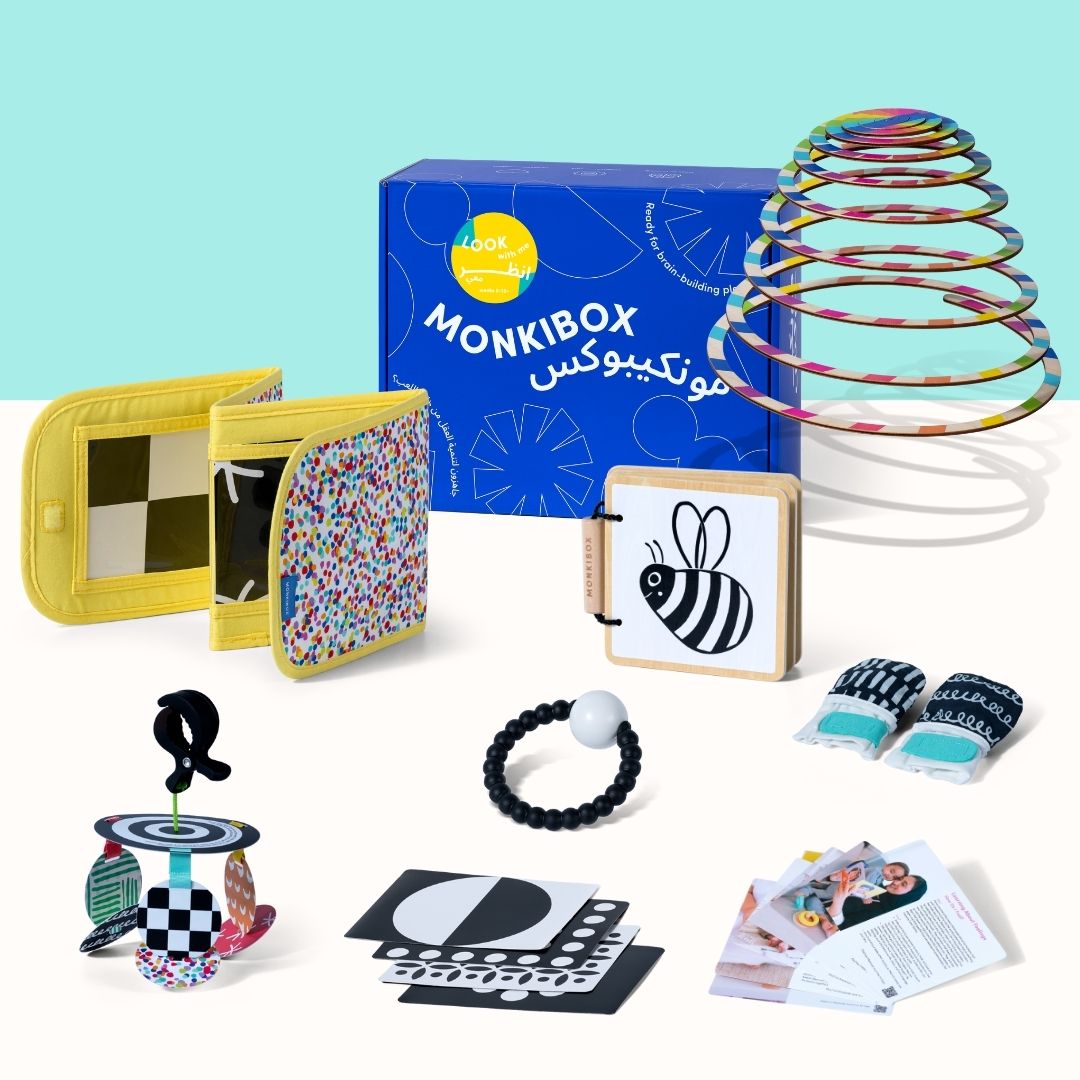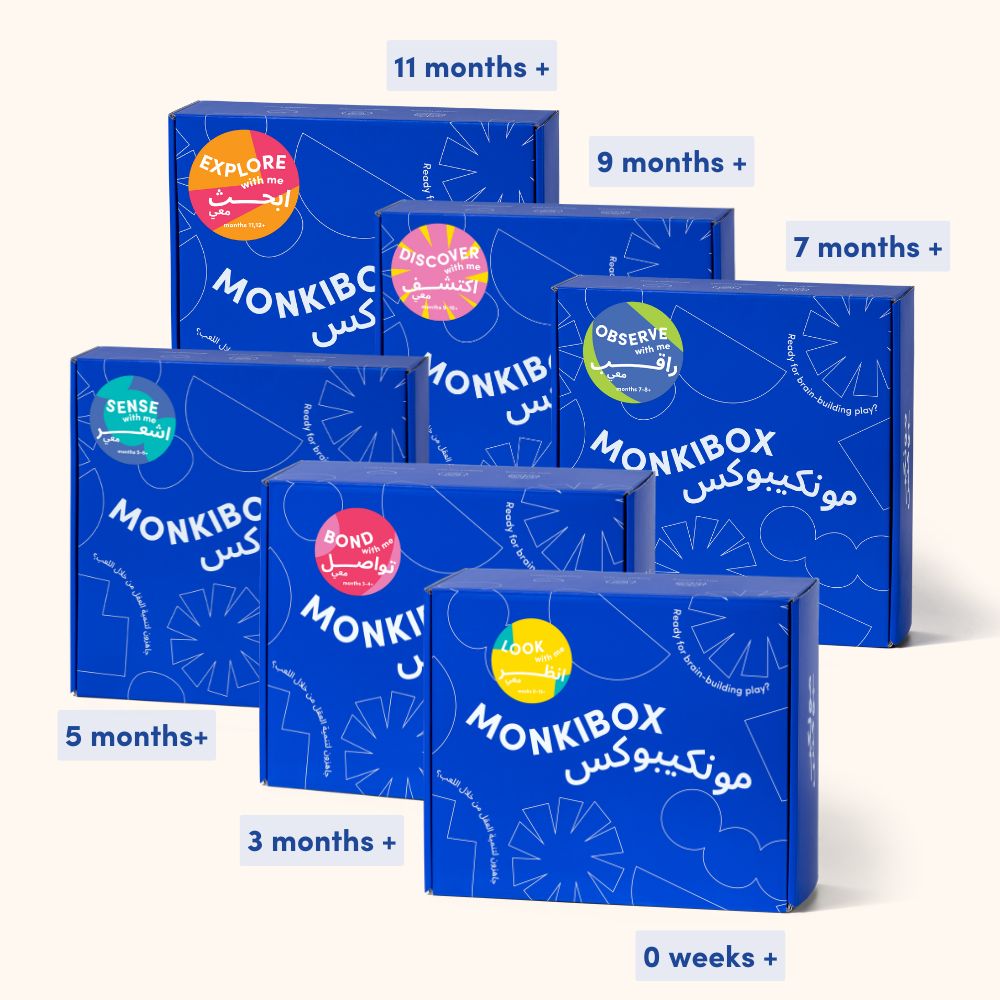مع أن طفلك لا يزال أمامه الكثير ليتعلمه عن اللعب المستقل، إلا أنكِ قد وضعتِ له الأساس اللازم لتحقيق ذلك. لقد وفرتِ له أساسيات اللعب المناسبة لعمره، وهيأتِ له مساحة آمنة للاستكشاف، وتركتِه دون مراقبة (مع مراقبته عن كثب) لفترات قصيرة للعب بمفرده.
مع تقدم طفلك في العمر، ستجدين أنه يصبح فضوليًا بشكل متزايد بشأن العالم من حوله وأكثر خيالًا أثناء اللعب.
هذه بداية مرحلة نمو رائعة، وهي مرحلة لا تتطلب الكثير من التدخل منك. أفضل ما يمكنك فعله هو توفير ألعاب مفتوحة لطفلك وفرص للعب بحرية. 
ما هي اللعبة المفتوحة؟
اللعب المفتوح هو أي نشاط يمارسه طفلك دون أي نتيجة أو قواعد أو قيود. يمكنه أن يترك لخياله حرية اختيار ما يلعبه وكيف.
لماذا هو مهم؟
يتيح اللعب المفتوح للأطفال الصغار حل المشكلات بينما يطورون مهارات اتخاذ القرار لديهم. هل تذكر عندما أعطيتَ طفلك سلة كنز؟ سمحتَ له باختيار ما يريد واستكشاف الأشياء كما يشاء طالما أراد اللعب.
أو عندما تُعطيه بعض المكعبات، التي يُمكن أن تُصبح طريقًا أو جسرًا أو منزلًا أو برجًا. إن خلق فرص للخيال والاستقلالية أمرٌ أساسيٌّ لنمو طفلك.
هل يجب أن تكون جميع الألعاب مفتوحة؟
بالتأكيد لا! حتى الأطفال الصغار يحتاجون إلى تعلم كيفية تخطيط أنشطتهم، وتحقيق هدفهم، والتحلي بالانضباط اللازم لإتمام المهام. التوازن الجيد بين اللعب المفتوح والمغلق أمرٌ بالغ الأهمية لتحقيق فوائد كليهما.
طرق اللعب
الألعاب المفتوحة عادةً ليست ألعابًا على الإطلاق. إذا نظرتَ حول منزلك، فربما تجد الكثير من أدوات اللعب المفتوحة.
وفيما يلي بعض المفضلة لدينا:
- الصناديق الكرتونية (كلما كانت أكبر، كلما كان ذلك أفضل!)
- الطين (بلاي دوه)
- الرمل والحجارة والحصى
- قصاصات القماش
- لوازم الورق
- مواد الفنون والحرف اليدوية، مثل منظفات الأنابيب والكرات الصوفية
- المغارف والملاعق
- الحاويات
- صناديق المناديل
- أغطية الزجاجات
- لفات ورق التواليت
مع أننا نشجع بشدة على اللعب المستقل باستخدام الأدوات والألعاب المفتوحة، إلا أننا ندرك أن بعض هذه الأدوات قد تُشكل خطر الاختناق، لذا ابقَ دائمًا قريبًا منهم إذا وضعوا أي شيء في أفواههم. اللعب بجانبهم سيسمح لك بمراقبتهم مع منحهم حرية القيادة أثناء اللعب.





